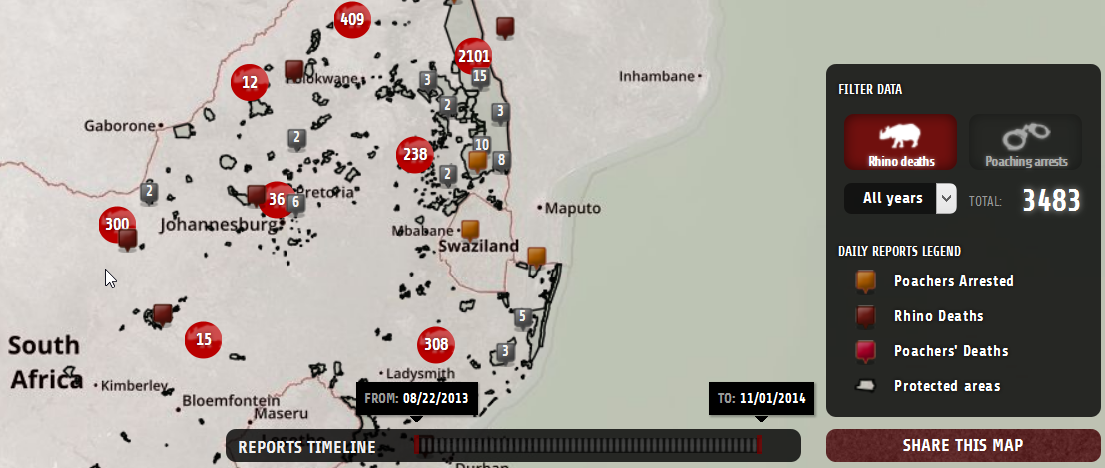Crucial questions when using digital technology in media and transparency projects

Oxpeckers.org uses digital technology to map rhino deaths in southern Africa
There are some amazing media and advocacy projects that digital technology. But for every success story, there are dozens of others that are just not working or are simply muddling along. OnMedia has put together thirteen important questions you need to consider before starting up any new digital technology initiative.
1. What is the added value that technology is giving to your project? (because if there is no added value, why are you using technology in the first place)
2. How can you make your project sustainable in the long-term? Who is going to pay for it or how is it going to pay for itself?
3. How easy is the technology for project managers to use? Do they have the skills to use the technology themselves or do they need extra training, are they aware of the pitfalls and challenges of this technology?
4. How will you organize support for your technology? Where will they be located, how will you contact them, can you afford it? (And keep in mind, overseas support can run into problems such as telephone costs or time zone issues of people being asleep exactly when you need help.)
5. Do people in your team have experience in working with developers? Are they able to assess if the developers or programmers are going to be able to achieve the goal within budget and on time?
6. How will your project sustain the skills development of the people involved?
7. How easy is it for the target group/target audience to use the technology? Are they literate, can they read, write or send text messages in the project’s language, do they already use this technology in their everyday lives, do they have a regular power supply?
8. Do people have a reason to use the technology?
9. How can you create a space for citizen participation? A space that people can use to safely report or comment and that can also be accessed by others to read these reports or comments?
10. How can you integrate traditional media, such as radio and television to help pass along your message or information?
11. How will you ensure people can understand the information you want to provide them with? Is this information in a language they understand, can they read or do you need a voice based-service instead, can you visualize information in a way that makes it easier to understand?
12. How will you promote or attract attention to your project with all the noise out there on the Internet?
13. How can you ensure that your project has an impact or holds people accountable? Simply monitoring or reporting on a topic isn’t necessarily enough to create change?
Read onMedia’s post 12 tips to using digital technology for media and advocacy.
These questions came up during the four-day DW Akademie South2South Media Dialogue held in Cape Town in November 2014. The dialogue brought together 14 people involved in innovative projects which use digital technology in some way to foster freedom of expression and information.
Written by Kate Hairsine



